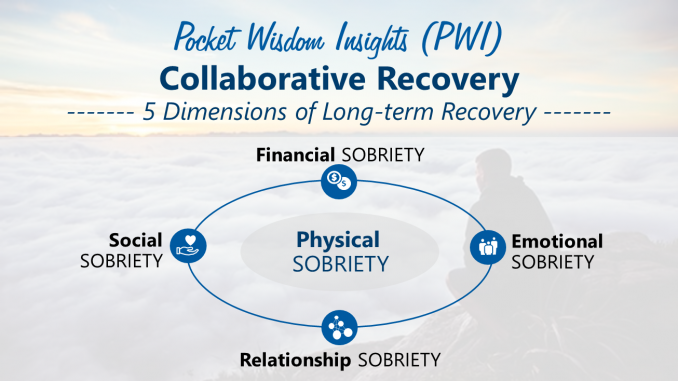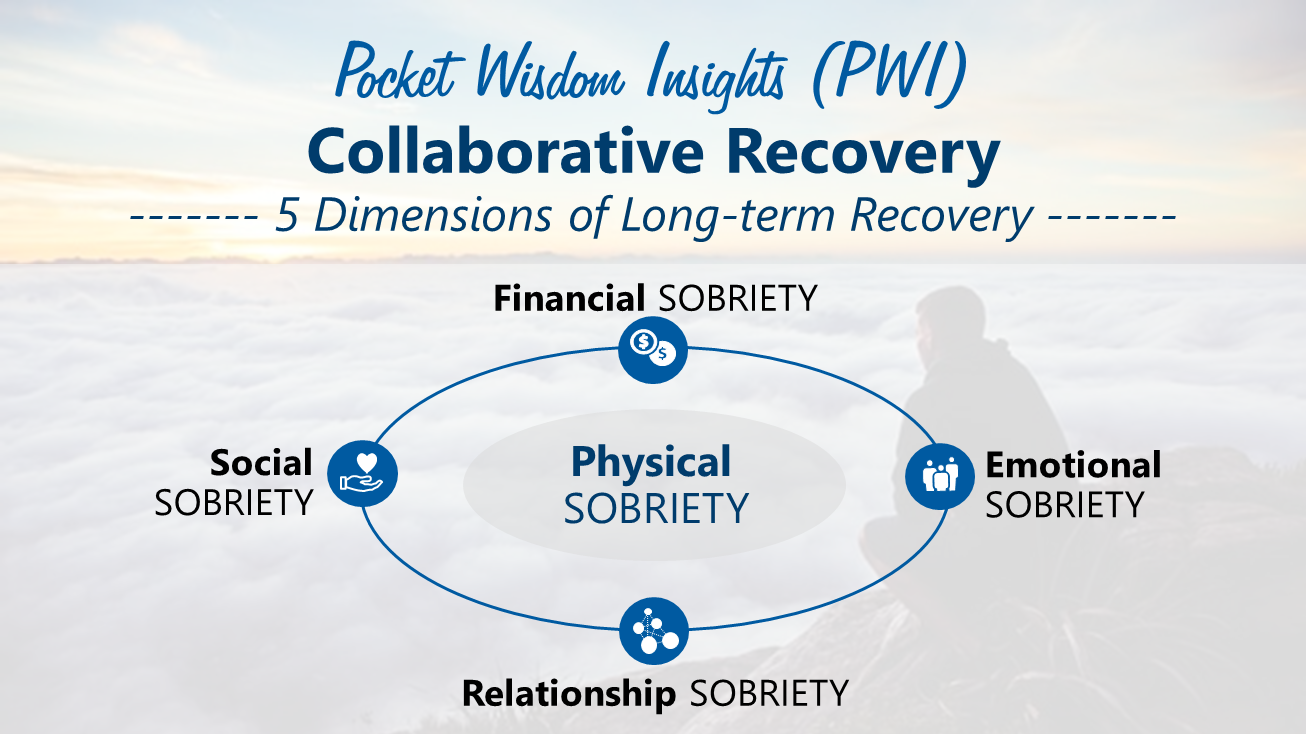
Opening Insights: Addiction in the Workplace
More than 70% of individuals with alcohol or illicit drug use continue to maintain employment, as many employees with alcohol or other drug problems can continue to remain “functioning.” Companies and organizations can no longer ignore the realities and repercussions of alcohol and other drugs in the workplace.... "Functioning" employees are costly in many ways...[1]
Addiction in the workplace comes in many shapes and forms:
- Technology Addiction
- Alcoholism
- Drug Addiction
- Food Addiction
- Exercise Addiction
- Anger Addiction
- Gambling Addiction
- And the list goes on...
Addiction walks into businesses everyday... we see its affects in the dwindling hiring pools, the growing talent shortage, toxic /dysfunctional work cultures, declining stock prices and the push/necessity to automate many customer service and human interface jobs.
Informational Insights: Addiction Facts and Stats
The reality is that addiction is rife within businesses. The impact is unavoidable and devastating to our world and culture - economically and socially.
Technology addiction is an umbrella term that may include addictive behavior to cybersex and online porn; video gaming; gambling; eBay and other online auctions or shopping; social media; excessive texting; or smartphone overuse as well as information overload.
- One in eight Americans suffers from problematic Internet use, according to a study published in The International Journal of Neuropsychiatric Medicine, and rates are even higher in many Asian countries. An estimated 30 percent or more of the Chinese population is classified as highly addicted to the Web.
- Six percent to 10% of smartphone users display signs of Internet addiction, estimates Phil Reed, a professor of psychology at Swansea University, in the U.K. While there’s currently no standard for what constitutes smartphone addiction, some experts define it as spending more than seven hours a day using the phone and experiencing withdrawal symptoms when cut off from the device.
- IAD may bring on chemical changes in the brain similar to those caused by substance use disorder, according to a study published in the journal Frontiers in Human Neuroscience. Children who suffer from Internet addiction have an increased risk of depression, problems at school, obesity and carpal tunnel syndrome.[2]
Addiction costs American businesses and organizations an average of $81 billion in lost profits every year. This is due to losses in productivity, high turnover rates, theft in the workplace, increases in absenteeism, utilization of sick time, and decreases in quality of work. Out of the 70% of employees that engage in substance use and maintain employment, over 42% report feeling a decrease in productivity as a result. Although job losses directly related to alcohol or other drug use are usually associated with more persistent and severe levels of substance use disorders, the use of these substances negatively impacts individual job attendance and performance long before lob loss occurs.
In addition, alcohol and other drug use increases the number of occupational injuries and fatalities, and affects the health and well-being of the employees. In emergency room visits for workplace related injuries, breathalyzer tests detected alcohol in 16% of cases. Over 10% of workplace fatalities involve alcohol. A subtler but just as important effect is the lethargy and short-term residual cognitive impairments that can follow a night of heavy drinking. This can increase the risk of injury for employees and their colleagues.
Beyond detriment to the bottom line of the organization and the health of employees, alcohol and other drug use can affect the attitudes and culture of an organization, lower morale, and decrease motivation, engagement, and trust. [1]
This is our world today. Many of us don't like to see it. Unfortunately there is still a stigma around addiction... hence, we don't see it, until it its too late.
Possibilities for Consideration: Socially Responsible Organizations
What do we do? Do we ignore the problem or do we find a solution and become Socially Responsible Organizations and Businesses?
There are many ways in which employers can create a drug-free work environment. Employers can educate themselves and employees on not only identifying the signs and symptoms of alcohol and drug use, but also the necessary steps to take when one suspects that a coworker may need help. Through education and clear drug-free workplace policies, employers can aim to increase awareness and clarify expectations.
Developing an employee drug testing program is another way to help create a drug-free work environment. Currently, over 50% of organizations require pre-employment drug screenings for all new hires, especially in high-risk industries such as mining, construction, and public safety. State laws generally allow organizations to randomly drug test employees once hired, however states have varying rules regarding these practices.
Employee Assistance Programs (EAPs) have been found to be highly effective resources for addressing addiction issues, but many organizations, especially smaller ones, do not have these programs available. EAP programs work to encourage and support addiction treatment and recovery through confidential assessments, short-term counseling, and resource referrals.
And it is worth it
Treatment for addiction, facilitated within or by the workplace, has been shown to be successful in increasing employees’ legal, mental, and social functioning, as well as decreasing absenteeism rates, workplace conflict, and productivity problems upon return from treatment. Investing in employee treatment yields high returns, with an estimated gain of 23% among employees with an income of $45,000 per year or an estimated gain of 64% for employees earning $60,000 per year.
With this ever-growing public health crisis, more and more lives are being affected both inside and outside of the workplace. Organizational involvement is now more important than ever. This involvement by employers is rapidly transforming to be less about punishing employee misconduct, and more focused on finding creative ways to provide education and resources for employees, to support them in seeking out lifesaving treatment for themselves or a loved one. Taking steps to address addiction is truly an opportunity to humanize the workplace and help reduce suffering and avoid painful, sometimes deadly, consequences.[1]
Traditional addiction programs and assessments can cost thousands of dollars. The best treatment facilities average $1000 to $3000 a day. One on one assessments cost on average $450 and counseling/psychotherapy costs anywhere from $200-$1000 per hour. These prices are not economically feasible to address the CULTURAL CHALLENGE within businesses and within society.
Additionally, if you consider that most people who enter addiction recovery, relapse... NOT BECAUSE THEY WANT TO BUT BECAUSE THEY RETURN TO THE SAME ENVIRONMENT THAT LEAD THEM TO THEIR ADDICTION PROBLEM... WE HAVE TO ASK... WHAT ARE THE REAL CHALLENGES WE ARE ADDRESSING?
- How to create a MATURE WORKPLACE CULTURE FREE OF ADDICTION?
- How to address the addiction problem before it infects and affects the work culture?
- How to find economically feasible solutions to addiction problems at work and within communities?
- How to provide socially responsible community prevention tools: soft skills and maturity skills?
We need a cultural solution, to address a cultural problem!
We need soft skill, life skills and maturity skills
to address the immaturity of an addictive culture.
RICHARD JORGENSEN
Add Your Insights
Change, long-term change cannot occur in isolation.
True long-term change requires a paradigm shift with the individual and the culture:
At work - home - worship and play
RICHARD JORGENSEN
Long-term recovery is something that many people seek, yet few people find. It consists of 5 Dimensions and COLLABORATION:

PWI Recovery - 5 Dimensions of Recovery actually goes from physical sobriety into financial sobriety and out of that we build – emotional sobriety, relationship sobriety and a place to fit into the world called social sobriety. We do this through a series of common elements all rooted in the 5 Absolutes, which are then expressed in:
- How to grow up,
- How to build relationships,
- How to deal with your emotions,
- How to let go of the things,
- How to be a better employee and
- When you are those things you are going to fit into society and belong and not be competitive with.
Many addiction recovery models focus on one dimension of recovery, none (until now) focus on all 5 Dimensions to ensure true recovery and long-term success.
It is important to note that the PWI Recovery Program is delivered and offered within the Pocket Wisdom Insights Recovery Co-Lab Institute. The PWI Recovery Co-Lab Institute supports, augments, incorporates and collaborates with many recovery associations, organizations, clinics, hospitals, professionals and publications to provide multi-disciplinary resources and supported whenever needed or requested.
Click to watch the video of The 5 Dimensions of Long-term Collaborative Recovery below:
Click below. Join the PWI Collaborative Recovery Co-Lab! Affordable LONG-TERM SOLUTIONS FOR Addiction Recovery, Detection, Prevention and Aftercare for businesses, organizations, schools, communities and homes!
Sources:
[1] Kelly, J. F. (2017, June 31). Working on addiction in the workplace [Web log post]. Retrieved December 30, 2018, from https://www.health.harvard.edu/blog/working-on-addiction-in-the-workplace-2017063011941
[2] Addiction.com (n.d). Technology Addiction 101. Retrieved December 31, 2018, from https://www.addiction.com/addiction-a-to-z/technology-addiction/technology-addiction-101/
[3]Pocket Wisdom Insights Library: https://library.pocketwisdominsights.com/pwi_cat_rec-scspkgs

